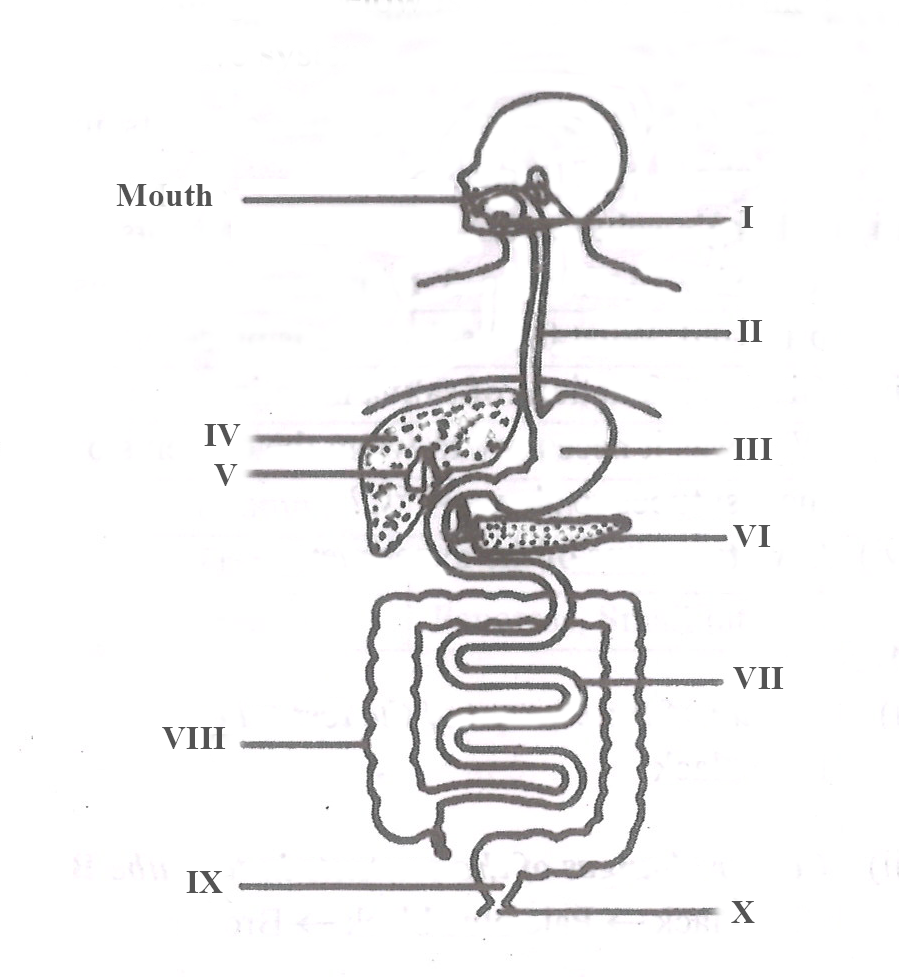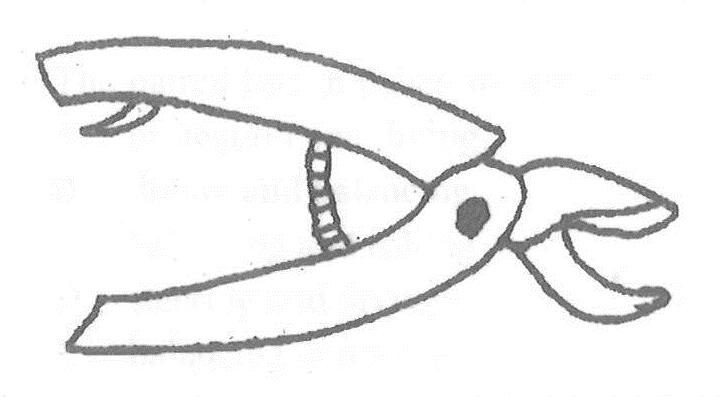1.
Water that forms lather readily with soap is said to be
clean.
hard.
soapy.
soft.
2.
Which of the following life activities are common to both plants and animals?
I. Feeding
II. Locomotion
III. Respiration
I and II only
I and III only
II and III only
I, II and III
3.
A suitable instrument that could be used to measure the internal diameter of a bamboo flute is
beam balance.
metre fule.
surveyor's tape.
vernier callipers.
4.
The ability of soils to supply the right amounts of essential nutrients to plants is known as
soil consistency.
soil fertility.
soil structure.
soil texture.
5.
The simplest way of making well water suitable for laundry purpose is by
adding alum.
boiling.
chlorination.
filtering.
6.
Washing down of soil nutrients beyond the reach of roots of plants is referred to as
aeration.
infiltration.
leaching.
percolation.
7.
Which of the following statements explain(s) why an object floats in water? A floating object
I. is less dense than water
II. is denser than water
III. has the same density as water
I only
II only
III only
I and III only
8.
An example of leafy vegetable crops is
cucumber.
lettuce.
okro.
onion.
9.
The structure in the respiratory system of humans where gaseous exchange occurs is
alveolus.
bronchus.
nostril.
trachea.
10.
The gas produced when glucose is oxidized during internal respiration is
carbon (II) oxide.
Carbon (IV) oxide.
hydrogen.
nitrogen.
11.
The farm animal which has crop as part of its digestive system is the
fowl.
goat.
pig.
sheep.
12.
A beneficial effect of wind on the environment is
promotion of photosynthesis in green plants.
pollination in flowering plants.
leaching in soils.
erosion in soils.
13.
The chemical solution that can be used to test for the presence of protein in food substances is
Benedict's solution.
Fehling's solution.
Iodine solution.
Millon's reagent.
14.
Which of the following statements about bush fires is/are true?
I. They cause air pollution
II. They deplete vegetation cover
III. They contribute to global warming
I only
II only
II and III only
I, II and III
15.
The most effective method of controlling soil erosion on steep slopes is
cover cropping.
mulching.
strip cropping.
terracing.
16.
Which of the following agencies is responsible for providing information on the weather and climate conditions of an area?
Animal Husbandry Department
Extension Services Department
Information Services Department
Meteorological Services Department
17.
The farming system which involves the growing of one type of crop on the same piece of land every season is known as
mixed cropping.
mixed farming.
monocropping.
monoculture.
18.
The fifth planet from the sun in the solar system is
Jupiter.
Mars.
Neptune.
Venus.
19.
The process that takes place when the sperm and the egg of humans fuse together is referred to as
fertilization.
menstruation.
ovulation.
reproduction.
20.
The process by which water vapour moves through the stomata of leaves into the atmosphere is known as
absorption.
diffusion.
osmosis.
transpiration.
21.
An example of intensive system of poultry keeping is the
deep litter system.
fold unit system.
free range system.
free-running system.
22.
The diagram below represents a circuit symbol in an electronic device. Study it carefully and use it to answer the question below.

The symbol represents
a light emitting diode.
n-p-n transistor.
light dependent resistor.
p-n-p transistor.
23.
The diagram below represents a circuit symbol in an electronic device. Study it carefully and use it to answer the question below.

The part of the diagram labelled I has
more electrons than holes.
no holes.
more holes than electrons.
the same number of holes as electrons.
24.
A spot made on a white paper with a given food substance turned the spot on the paper translucent. The food substance is likely to contain
glucose.
oil.
protein.
starch.
25.
Which of the following sources of energy is non-renewable?
Sun
Waves
Wind
Wood
26.
Which of the following farm animals is/are housed in a hutch?
I. Goats
II. Pigs
III. Rabbits
I only
III only
I and II only
II and III only
27.
Which of the following blood vessels carries deoxygenated blood?
Aorta
Pulmonary artery
Pulmonary vein
Renal artery
28.
The energy transformation that takes place in a car battery is
electrical energy → chemical energy → light energy
chemical energy → light energy → electrical energy
chemical energy → electrical energy → light energy
electrical energy → light energy → chemical energy
29.
The type of liquid suitable to construct a thermometer to read temperatures of about 150oC is
alcohol.
mercury.
turpentine.
water.
30.
Amino acids are the end-products of the digestion of
carbohydrates.
fats.
oils.
proteins.
31.
The type of teeth used by mammals to eat food materials is
canine.
incisor.
molar.
premolar.
32.
Fishponds are often stocked using
anchovies.
fingerlings.
fish eggs.
frys.
33.
Which of the following processes result(s) in the formation of a new substance?
I. Burning of wood
II. Rusting of iron nail
III. Heating water into vapour
I only
I and II only
II and III only
I, II and III
34.
The use of resistance breeds of farm animals in controlling diseases is a
biological control method.
chemical control method.
cultural control method.
physical control method.
35.
A load of 10 N is moved through a distance of 2 m. Calculate the work done.
5 J
10 J
20 J
50 J
36.
Which of the following components of human blood is dissolved in the plasma?
Mineral salts
Phagocytes
Platelets
Red blood cells
37.
An atom of carbon is represented as 612 C. How many neutrons are in the nucleus of the carbon atom?
2
4
6
12
38.
In agribusiness, middlemen operate within the
production chain.
processing chain.
supply chain.
value chain.
39.
Which of the following illustrations shows the correct direction of the lines of force around a bar magnet?




40.
The human sex cells are produced in the
scrotum and uterus.
testis and ovary.
penis and vagina.
scrotum and ovary.
(a)
The diagram below is used to demonstrate an activity in the laboratory.
Study it carefully and use it to answer the questions that follow:

(i)
What does the diagram represent?
(ii)
Identify the components labelled, D, E, K and P in the diagram.
(iii)
State one function each of the parts labelled, D, E, K and P.
(iv)
Mention the energy transformation that occurs in E in the diagram when K is closed.
(b)
In an experiment, red and blue litmus papers were dipped separately into three test tubes containing one of the test substances listed in the table below.
| Test substances | Observation | Conclusion | |
| Red litmus paper | Blue litmus paper | ||
| Lemon juice | |||
| Calcium hydroxide | |||
| Dilute hydrochloric acid | |||
(i)
Copy and complete the table by making the necessary observation and conclusion for each substance.
(ii)
Name two of the test substances that would react with each other to produce salt and water.
(iii)
Write down a balanced chemical equation for the reaction in (ii) above.
(c)
The diagram below is an illustration of the human digestive system.
Study it carefully and use it to answer the questions that follow:

(i)
Name the parts labelled I, II, III and IV.
(ii)
State one function of each of the parts labelled V and VI.
(iii)
Name the part where the digestion of protein starts.
(iv)
Identify the part where
(α)
absorption of end-products of digestion takes place.
(β)
re-absorption of water takes place.
(γ)
egestion takes place.
(d)
The diagram below is an illustration of a simple farm tool.
Study it carefully and use it to answer the questions that follow:

(i)
Identify the tool.
(ii)
State three uses of the tool.
(iii)
Mention three ways of maintaining the tool.
(a)
(i)
What is neutralization reaction?
(ii)
Write a balanced chemical equation for the reaction between each of the following pairs of substances:
(α)
Sodium metal and dilute hydrochloric acid
(β)
Sodium hydroxide and dilute hydrochloric acid
(b)
Explain weaning as used in animal production.
(c)
(i)
What is a Milky Way?
(ii)
State one use of artificial satellites.
(d)
(i)
What is a habitat?
(ii)
Give two examples of a habitat.
(a)
(i)
Define Pressure
(ii)
Explain why it is important to sharpen a knife before use.
(b)
(i)
State two differences between metals and non-metals.
(ii)
What is an alloy?
(ii)
Mention the components of each of the following alloys:
(α)
steel;
(β)
brass.
(c)
Mention three conditions suitable for rearing tilapia in a fishpond.
(d)
Explain how the streamlined body of a bony fish enables it to live successfully in water.
(a)
(i)
What is a disease vector?
(ii)
Mention two methods of controlling each of the following types of pests of farm animals:
(α)
ectoparasites;
(β)
endoparasites.
(b)
(i)
State two symptoms of nitrogen deficiency in a tomato plant.
(ii)
Describe side dressing as a method of fertilizer application.
(c)
(i)
Define power
(ii)
State the S.I unit of power
(d)
Draw the electronic structure of potassium
[Atomic number of potassium = 19]
(a)
(i)
What is respiration?
(ii)
Name the types of respiration that occur in humans.
(b)
List three ways of maintaining soil fertility.
(c)
(i)
Write the systematic name of each of the following chemical compounds:
(α)
FeS;
(β)
SO2;
(γ)
CO2.
(ii)
Give one reason why copper, silver and gold are mostly used in making ornaments and jewellery.
(d)
(i)
What is a fuse?
(ii)
Explain why a fuse is used in an electrical circuit.
(a)
(i)
What is the difference between unicellular organism and multicellular organism?
(ii)
State two reasons why vegetable crops are important to humans.
(b)
(i)
State two elements of climate.
(ii)
What is the difference between climate and weather?
(c)
Mention three advantages of staking in crop production.
(d)
Explain each of the following processes:
(i)
corrosion;
(ii)
sublimation.